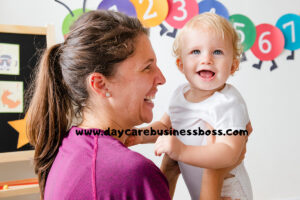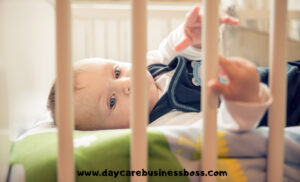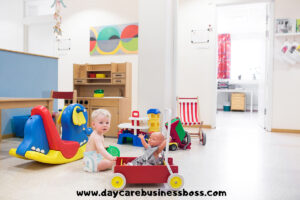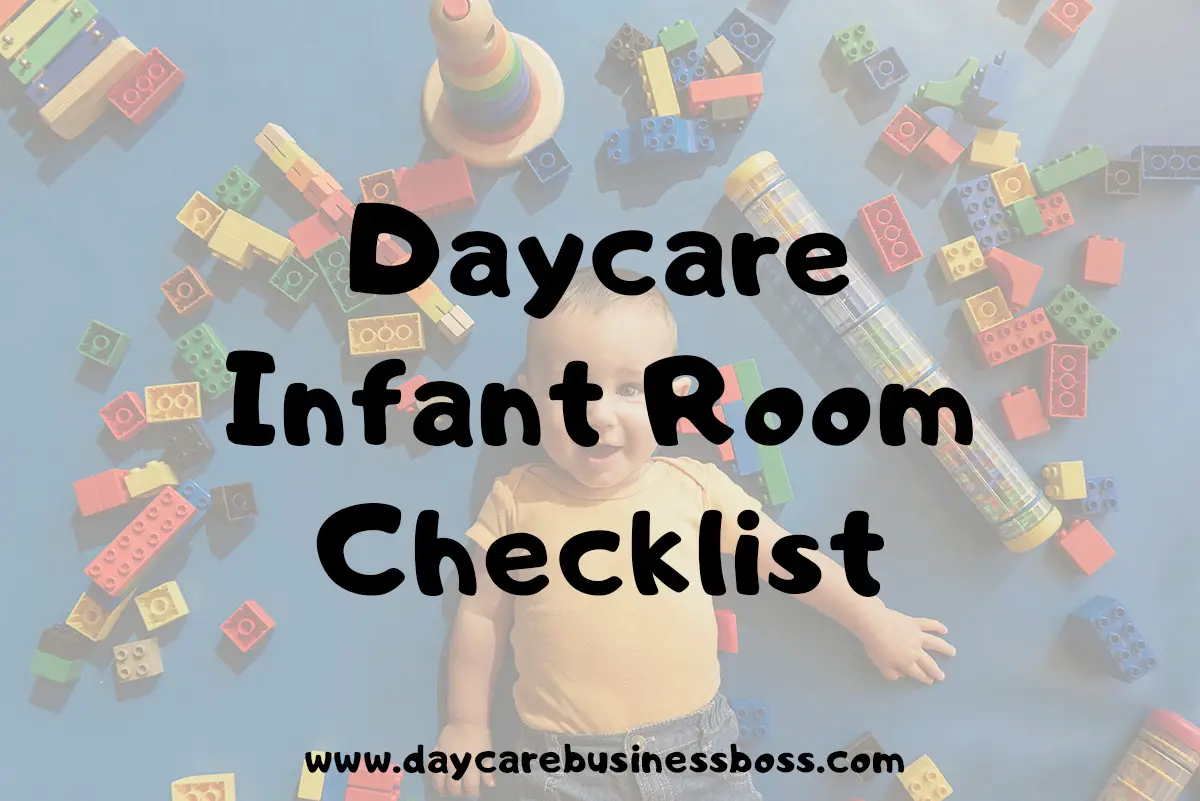As a daycare center director, many parents trust you to keep their children safe and free from harm every day. Whilst most older children know enough about the difference between right and wrong to avoid dangerous situations, there is one area of your daycare that may have to be given special attention. This area not only needs special attention to ensure that the infants are safe, but it also needs specialized items and toys to encourage social, emotional, and developmental growth in infants, as well as the necessary supplies you will need to provide proper care for them.
An infant room checklist for your daycare center should become divided into categories that include staffing requirements, supplies, furniture and equipment, toys, and special requirements.
In this article, we are going to take an in-depth look at each of the categories of an infant room checklist. I will include which equipment, furniture, and toys should be included in every daycare infant room, as well as the supplies that your daycare should always have on hand. We will also discuss the staffing requirements your daycare center should meet or exceed when it comes to caring for infants. Finally, I will also include the dedicated spaces your daycare should have in its infant room, and how they should be used.
Why Is It Important To Have an Infant Room Checklist?
 Before we dive into what should be included on your daycare’s infant room checklist, let’s take a look at why it is important to have a checklist. According to the US Department of Health and Human Services, a high-quality infant and toddler room is created by planning and planning developing spaces to benefit infants and toddlers’ overall well-being. This requires careful preparation and thoughtful planning on your part, as it is your responsibility to nurture the children in your care as well as assist them in developing positive relationships with adults and authority figures as they grow.
Before we dive into what should be included on your daycare’s infant room checklist, let’s take a look at why it is important to have a checklist. According to the US Department of Health and Human Services, a high-quality infant and toddler room is created by planning and planning developing spaces to benefit infants and toddlers’ overall well-being. This requires careful preparation and thoughtful planning on your part, as it is your responsibility to nurture the children in your care as well as assist them in developing positive relationships with adults and authority figures as they grow.
One of the most overlooked aspects of your infant room is that it should be designed to promote a sense of togetherness between your staff and the children. Keep in mind that you should work in conjunction with parents to accommodate the needs of their infants and toddlers as much as possible. An infant room should be designed for the following:
- Ensuring that the children in your care are healthy and safe.
- Supporting the development of positive relationships with adults.
- Providing engaging experiences to enhance learning.
- Being responsive to children’s individual needs.
Having a checklist that specifically states what items should be included in your daycare’s infant room, and how they should be used, will ensure that you are providing the best possible care for your children.
How can parents prepare their baby for daycare?
What Should Be Included In the Infant Room Checklist?
Now that you understand the importance of having an infant room checklist, it’s time to dive into what should be included in your infant room. This checklist will include all of the supplies you should keep stopped in your infant room, as well as toys, furniture, and equipment that you will need. Of course, this checklist will offer suggestions as to which items should be included in your infant and toddler room. For advice on any rules and regulations that your daycare must follow, consult with your state and local authorities.
Staff Requirements
- Does the infant room have at least a 1:2 caregiver to child ratio?
- Are staff members designated specifically for the daycare’s infant room?
- Is every member of the infant room staff trained on infant CPR?
- Has the staff been trained on developmental milestones in infants and toddlers?
Supplies
- Is there an adequate supply of diapers and wipes on hand in multiple sizes?
- Is there anything adequate supply of baby powder and lotion in the room?
- Are there towels and hand soap provided by the daycare?
- Are there spare bottles, nipples, and liners included in the infant room?
- Are all cleaning supplies kept out of the reach of young children?
Furniture, Equipment, and Toys
 Are there enough cribs to accommodate every child?
Are there enough cribs to accommodate every child? - Does each crib have separate bedding?
- Are there rocking chairs provided for staff members to rock infants?
- Are the rocking chairs accessible to mobile infants and toddlers?
- Does the infant room have bean bag chairs available for children?
- Does the furniture placement in the infant room interfere with the supervision of children?
- Is all of the furniture steady, tightened, and secured?
- Does the furniture have any exposed or sharp corners?
- Does the furniture have any protruding nails or screws?
- Is there any paint that is peeling from the furniture?
- Are all changing tables in the infant room kept in good repair?
- Do all changing tables have at least a 6 inch raised edge around them to prevent falls?

- Is the size of the furniture appropriate for the children to use it?
- Does the infant room have toys that promote the development of fine motor skills?
- Does the infant room include educational toys?
- Are larger toys placed out of the reach of children?
- Have all of the toys been inspected to ensure that they are not choking hazards?
- Are all electrical outlets covered?
- Are all electrical cords, strings, and other hazards kept out of the reach of the children?
- Do bathroom step stools have handrails?
Furniture Placement and Usage of Space
- Is there an area in the room allocated for rocking children?
- Is there an area in the room dedicated to early child development and play?
- Is there an area in the room specifically allocated for napping?
- Are all exits in the infant room free of debris, clutter, and furniture?
- Are all doors in the infant room kept shut at all times?
- Are young children permitted to play near doors or open stairwells?
- Does the infant room have any exposed radiators or other heat sources?
Routine Care
 Is the floor of the infant room kept free of spills or other liquids?
Is the floor of the infant room kept free of spills or other liquids?- Is the infant room sanitized daily?
- Do the cribs have any loose sheets, blankets, pillows, or stuffed animals?
- Does the crib mattress fit snugly inside of the crib?
- Are teaching materials and other hazardous objects kept out of the reach of children?
Conclusion
As a daycare center director, parents are trusting you to provide the utmost care for their children. Designing a top-notch infant room is just the first step to providing this level of care. Most daycare centers will Implement a checklist that must be reviewed daily. These checklists will ensure that all precautions have been taken to ensure the health and safety of the infants and toddlers that attend your daycare, as well as making sure that your daycare is providing the children in your care with the best opportunity to succeed. After all, isn’t that what you opened your daycare for in the first place?
Related Questions
What is the recommended teacher-to-child ratio for an infant and toddler room in a daycare center? According to the website childcare.gov, here are the recommended teacher to child ratios for infant and toddler rooms:
- One trained adult should not care for more than three to four infants.
- One trained adult should not care for more than three to six young toddlers.
- One trained adult should not care for more than four to six older toddlers.
However, it should be kept in mind that these are merely recommendations. Be sure to check your individual state’s requirements.
Does a daycare center need to be insured? Although in-home daycare centers are generally covered by general liability insurance, most states require commercial daycare facilities to have childcare insurance. This also applies to before-and-after school programs, religious and nonprofit childcare centers, and child and adult group homes. For further information regarding the rules and regulations regarding insurance in your state, consult with a licensed insurance agent.
Please note: This blog post is for educational purposes only and does not constitute legal advice. Please consult a legal expert to address your specific needs.
To learn more on how to start your own daycare checkout my startup course and documents here.

Meet Shawn Chun: Entrepreneur and Childcare Business Fan.
I’m a happy individual who happens to be an entrepreneur. I have owned several types of businesses in my life from a coffee shop to an import and export business to an online review business plus a few more and now I create online daycare business resources for those interested in starting new ventures. It’s demanding work but I love it. I do it for those passionate about their business and their goals. That’s why when I meet a childcare business owner, I see myself. I know how hard the struggle is to retain clients, find good employees and keep the business growing all while trying to stay competitive.
That’s why I created Daycare Business Boss: I want to help childcare business owners like you build a thriving business that brings you endless joy and supports your ideal lifestyle.


